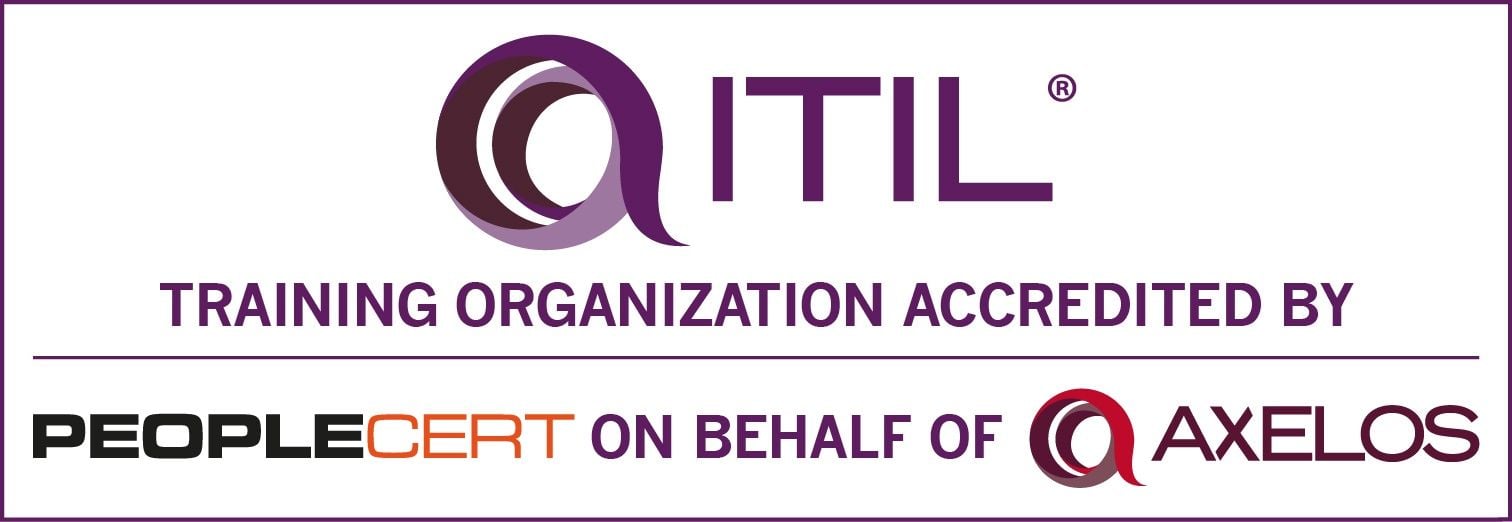SIAM and ITIL - What are they, do they work together?
HDAA is accredited to run SIAM courses as well as ITIL.
Scott Ersatz: Good morning, good evening, good day, and welcome to our podcast. My name is Scott Ersatz and today we will be covering off on the topic of SIAM and ITIL and how they can work together. We have a guest speaker, Nevine Kander, to help us better understand how and what we need to consider when trying to combine these two frameworks.
Scott Ersatz: Nevine, welcome to the podcast. How are you?
Nevine Kander: Hi Scott. Thank you for giving me the opportunity to speak with your listeners today. I am very well. Thank you so much for asking and very excited to be here today.
Scott Ersatz: No problem. Now Nevine, have you been keeping up with the latest developments of service management?
Nevine Kander: Yes, I have. I've been reading a lot about SIAM lately and how it can be used with the latest concepts of ITIL.
Scott Ersatz: Oh, what's your take on it? And for our listeners, what do the acronyms SIAM and ITIL stand for? By the way, I'm always interested in hearing other experts opinion. I mean, it seems every day there is some four letter word being invented for something.
Scott Ersatz: This gets so frustrating, which makes me think of another four letter word, if you know what I mean. .
Nevine Kander: Yes, that's right. I know it can be overwhelming at times. Scott, let me explain to your listeners. SIAM stands for Service Integration and Management, whereas ITIL stands for Information Technology Infrastructure Library.
Nevine Kander: Wow, that's a mouthful. Ha ha. I do think that SIAM has a lot of potential for businesses. It's a framework for managing multiple suppliers and service providers in a coordinated way.
Scott Ersatz: Right. Yes. I totally agree. One of the benefits of SIAM is that it helps organizations to better manage the complexity that can come outsourcing various IT and other services.
Nevine Kander: Exactly. And it's not just limited to IT services. SIAM can be applied to a wide range of service management scenarios, including hr, facilities management and more.
Scott Ersatz: That's true, and I think one of the key advantages of SIAM is that it provides a consistent approach to managing these services, which can help to improve effectiveness and efficiencies, especially when you have a multi-vendor environment.
Scott Ersatz: I mean, which business today doesn't have a long list of vendors they deal with to manage even the most simplest of services.
Nevine Kander: Definitely another benefit of SIAM is that it can be used alongside other frameworks like ITIL to provide a more comprehensive approach to service manage.
Scott Ersatz: Absolutely. I think the integration of SIAM and ITIL can be particularly powerful.
Scott Ersatz: For example, ITIL provides best practices for specific IT service management processes while SIAM provides a holistic view of managing multiple service providers. Navine, are you able to elaborate for our listeners, given your broad experience with a scenario that you would envisage SIAM being used in conjunction with ITIL.
Nevine Kander: Sure. Here's an example of how you would go about using SIAM in conjunction with ITIL in a business, I mean, imagine a company has outsourced its IT infrastructure and application development to multiple service providers. Using the SIAM framework, the company can coordinate the management of these multiple suppliers and ensure that the services they provide are aligned with the company's overall business goals.
Nevine Kander: At the same time, the company can also use the ITIL framework to establish best practices for specific IT service management processes, such as incident, problem, and change management. By combining the two frameworks, the company can effectively manage its IT services and ensure that they are delivered in an efficient and consistent manner.
Nevine Kander: So by combining the two frameworks, organizations can get the best of both worlds. The specific guidance of ITIL and the broader perspective of SIAM.
Scott Ersatz: I see. So SIAM is more so about understanding how business can communicate and manage services between them, whereas ITIL is more so focused on the service excellence internally driving such things as the management of incidents, changes, problems, as well as keeping an eye on key performance indicators and service level agreements.
Scott Ersatz: As I ponder this concept, I think more and more businesses are starting to see the value of using SIAM and ITIL. It's definitely a trend worth paying attention to. So do you see any potential downside to using these two frameworks together?
Nevine Kander: As with any framework or methodology, there can be potential downsides to using SIAM and ITIL together depending on the specific circumstances of the organization.
Nevine Kander: Here are a few potential drawbacks to.
Nevine Kander:Implementation costs, both SIAM and ITIL require a significant investment of time and resources to implement effectively. This can be a challenge for organizations with limited budgets or resources.
Nevine Kander:Complexity. The combination of SIAM and ITIL can introduce additional complexity to an organization's service management processes.
Nevine Kander: This may require additional training and resources to ensure that all stakeholders are able to effectively understand and utilize the frameworks.
Scott Ersatz: I agree with these first two, they can blow out and cause more issues if not funded and managed properly as a project.
Nevine Kander: 100% in agreement there, Scott. Other challenges are such things as inflexibility.
Nevine Kander: The prescriptive nature of both SIAM and ITIL can make it difficult for organizations to adapt the frameworks to fit their specific needs and circumstances. This can limit the ability of the frameworks to support innovation and agility. Overall, it's important for organizations to carefully evaluate the potential costs and benefits of using SIAM and ITIL together before making a decision.
Nevine Kander: It may be that one or both of these frameworks are a good fit for an organization or it may be that a different approach is needed.
Scott Ersatz: Okay. That was a great insight to these two frameworks, Nevine, and I'd like to thank you for your time today. We will have you back again for future podcasts, but for now it's time to go.
Nevine Kander: Definitely. It's been great chatting with you about SIAM and its potential for businesses. I'm sure we'll have more opportunities to discuss this and other topics in the future.
Scott Ersatz: Definitely. Thanks for the interesting conversation, Nevine. To our listeners, thanks for joining us on the IT Service Management podcast.
Scott Ersatz: Proudly sponsored by HDAA, the premier service management membership base. HDAA helps thousands of individuals make sense of and implement their ITSM challenges in their businesses. If you'd like to know more, go to https://hdaa.com.au. There are over 900 articles to read through templates for setting up incident problem change, and many more practices.
Scott Ersatz: Plus being a member gets you substantial discounts on their live and e-learning courses. Once you have studied the materials, they can then support you to implement the content you've learned. Well, that's it for today's podcast. Thanks for listening and see you next time on the podcast. Bye for now.

)
)
)
)
)
)
)
)
)
